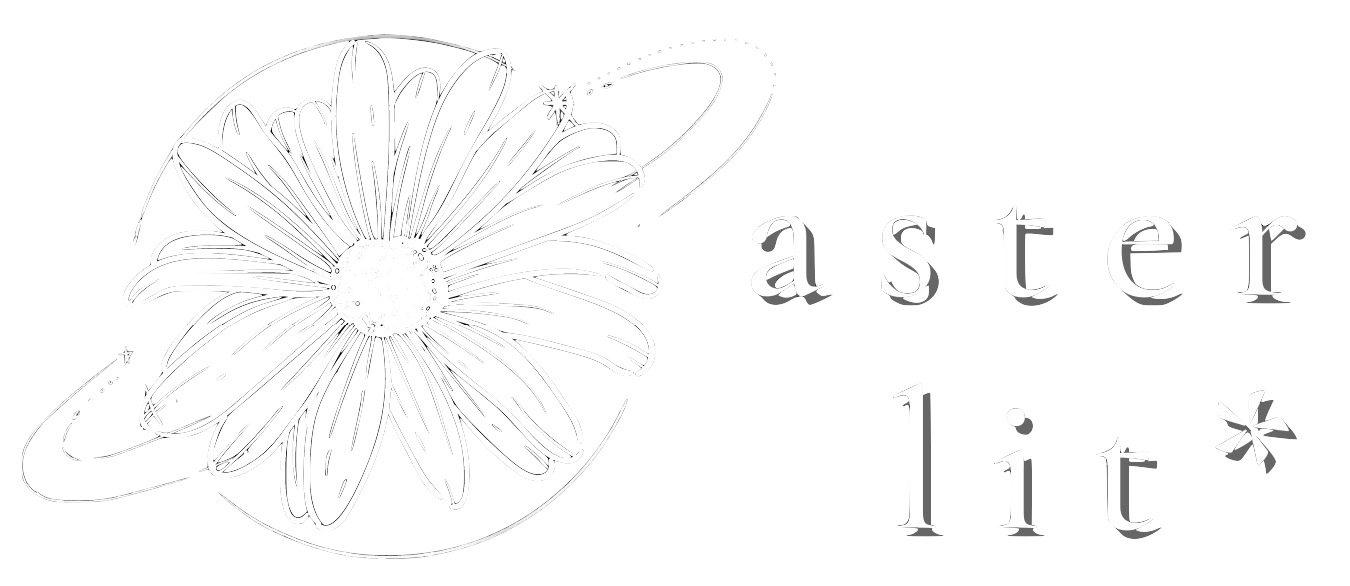
Aster Lit: translatability
Issue 12- Summer 2024
Written in the past, read in the future
Joudy Khaled
𓀁
The above picture represents one of the many hieroglyphs that exist in the ancient language of my birth country. It portrays an image of a seated man with his hand to his mouth, used for activities that involve the mouth; for example, eating, drinking, talking, not talking, and love. But, how did people who’ve never spoken this language before come to this conclusion?
It was unknown whether the ancient Egyptian language was phonetic or symbolic. With the discovery of the Rossetta stone, Jean-François Champollion was able to decipher the Egyptian hieroglyphics based on an assumption that the three scriptures on the stone (Hieroglyphics, Demotic and Ancient Greek) all wrote the same thing. For Champollion to translate the scripture, a comparison had to be made between Ancient Greek, which could be read at the time, and the Ancient Egyptian language. He concluded that the language was both phonetic and ideographic, but also had determinatives that couldn’t be spoken—though they added useful information to the text.
I watched as people scuffled inside the small room titled: “Get your tickets here!” There were people from all walks of life: the doctor and the photographer, the student and the teacher, the tourists from different countries. We were all hurrying to see the same thing: the pyramids, the tombs, and the famous sphinx, partially forgetting the language barrier between all of us. Not just between the Egyptian, the Chinese and the Russian tourists, but with the language that we were all anticipating to see. The hieroglyphics. A language none of us understood—except maybe the Egyptology student that stood with his pen and notebook—but still, a language none of us have heard or spoken before.
The first time I saw the hieroglyphics carved onto the wall, I felt nothing. It was an insignificant moment to me—mainly because I didn’t understand what it was saying. “Mom, can we leave yet?” I said in Arabic as my mom continued to take picture after picture of me standing next to the unknown language.
At that moment, a group of French tourists walked in with an Egyptian tour guide who spoke fluent French. My embarrassment grew the moment I knew that more people had entered the room—was it a tomb?—that we were in. But they didn’t even give me a glance. They were enthralled with what the tour guide was saying as he pointed at different symbols.
There were two kinds of people infiltrating the tomb. Those who wanted to learn, and those who wanted entertainment. While to some, the stories carved on the wall were simply characters and events, to others, they represented real people that experienced love, sadness, and stress.
My time at Aster Lit has motivated me to rethink my trip to the pyramids, something I used to deem insignificant. The definition of “language” and “translation” that I once knew was challenged with a broader question—what’s translation?—that branched into many sub-questions: Is translation the act of self-expression? The learning of our history? Is translation just interpretation? Assumption? Is language in itself an act of translation despite it being the translated? Though at first I didn’t have a clear answer, I was encouraged by both team members and great submissions to Issue 12: Translatability to find out. Many of those submissions were about their own cultures and heritage, and how they related that to translatability. Hearing all of those different interpretations of translation made me want to form my own. And so, I unlocked my phone and looked back at the millions of pictures my mom captured of me as I stood sulking next to the 𓀁.
You could think the symbol was telling me to “suck it up.” Or maybe to “shut up”? Which one was true—I guess—is up to your own interpretation. But what mattered for me most at that moment was about who was shushing me? How dare he! Didn’t a man know it was rude to tell a young lady to shut up? I could go on about how that man probably never married—but oh! That’s it!
Who? The question I was looking for.
That man who was inscribed into the wall of a tomb forever probably had a family (no wife though!) and a life of his own. My biggest fear for a while was of “death” until I realised my actual fear: not being remembered after my death. I always aimed to encourage my peers to leave their own fingerprints on the world. An impact. And I realise now that that man had a similar fear to mine.
To cease to exist, to no longer be, is a scary thing. To know that there will come eras, technologies, stories, and people that we will never know of—and who, in turn, won’t know us—is terrifying. And something that helps us cope with this uncomfortable truth is knowing that somewhere out there lies our story, thoughts, and beliefs, whether in the form of poems or hieroglyphs, and that a translator will come along to interpret it and remember who we were. Just like how Champollion translated the hieroglyphs despite how different the language is from our own, showing that we have always found the past—specifically, people’s lives in the past—worth deciphering and remembering.
